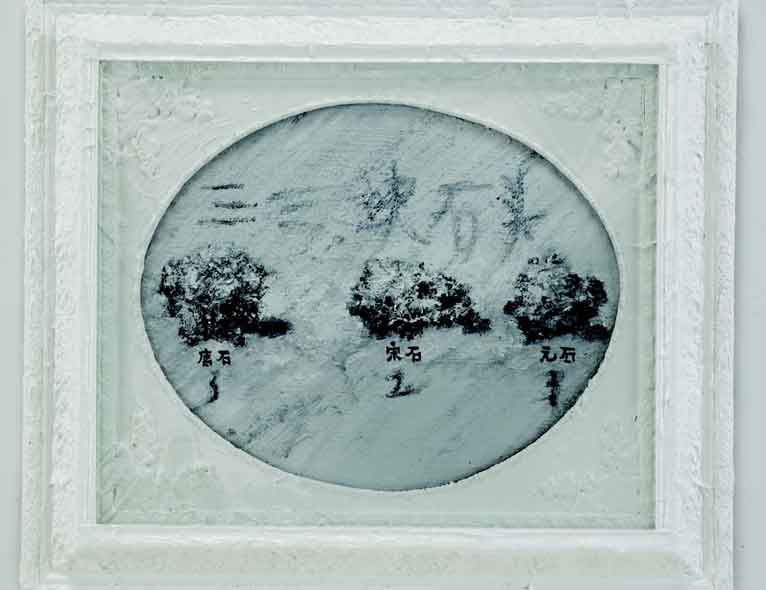LIU WEI
| May 5, 2011 | Post In LEAP 8

At first glance, Liu Wei’s recent outing was more conceptual than painterly—an important development as evaluations of Liu’s work often center on the question of the painterly. But the signs of a conceptual turn are hard to ignore, starting with the frames in which the paintings hang, handcrafted by the artist and coarsely mimicking the Baroque style of the Louis XIV era. Some have been intentionally smashed and left to hang with residual, sharp shards of glass. To a certain extent, we can view these works as installations rather than as paintings. His widespread use of gray also prevails; having publicly stated Gerhard Richter’s influence on his work, his return to blurred gray portraits inevitably evokes an association between the visions of these two artists.
Nonetheless, we must first and foremost view Liu Wei as a painter. For other artists the term “painter” merely connotes a kind of a status, but for Liu it is an honorific. As a painter, Liu Wei demonstrates a deft grasp of technique and an acute awareness of color and composition. Looking back at his previous exhibition, we find that these new works mark Liu Wei’s most extensive mastery of gray to date. Perhaps due to a measured proportion of white, his painting of Chinese mountain rocks produces a sort of three-dimensional Escher effect. His forest motif paintings have mottled surfaces reminiscent of asphalt; his technique here involved spreading a glutinous film over layers of applied paint, and then peeling back the layers to leave traces from the process. Meanwhile, his portraits make use of a method that he developed in the late 1990s: his subjects’ faces, intentionally blurred, emanate a sort of dimly festering quality.
Considering Liu Wei’s use of color, two principal hues directly coincide with the arc of his creative transformation, beginning with his iconic pink. What were once the deep reds and scarlets of his “Cynical Realist” period turn into hazy, delicate shades of pink, exquisitely depicting the feelings of excess and lust seething in the heart of the artist. Based on our preconceived notions of Liu, we tend to focus on his motifs and overlook his use of pink. His is a pink taken straight from everyday images—the skin of a human cheek, the center of a cut of pork, a scoop of watermelon. And his greens are even more compelling; only when he began to paint landscapes did we see green enter his paintings with a greater sense of vitality. Deep, original, and rich, it was the result of the combined impact of Richter, Taoist philosophy, and Polaroid images. Perhaps Liu’s most outstanding works are those in which these two colors come together, as with his landscapes from 2006.
It may be more effective—as well as more in line with Liu Wei’s own intentions—to consult his use of color when attempting to sort through his creative evolution, as opposed to approaching each phase from a broader sociological perspective. After all, the artist himself has been known to say, “With my hand, I paint my heart.” To focus on his use of color is but one of many possible frames of analysis, albeit an important one. Liu’s work explores two predominant issues. The first are problems related to inner life, as exemplified in his portraits and landscape; the second are problems of cultural identity, as seen in his portrayal of Chinese scholar’s rocks. What is worth celebrating is that in voicing these problems, he defers to his own intuitions rather than looking to external sources for answers— something that can be regarded as a kind of staunch loyalty to the craft of painting itself. Pu Hong

